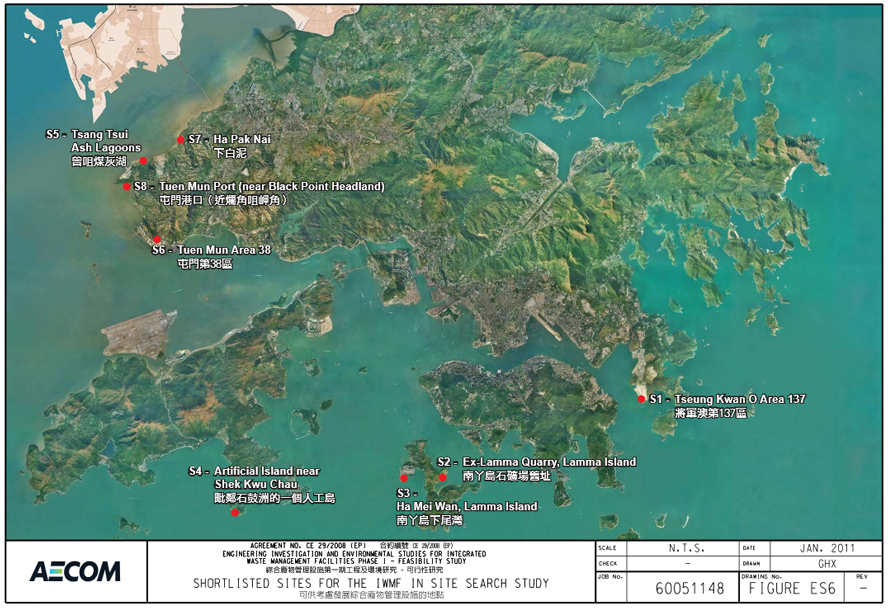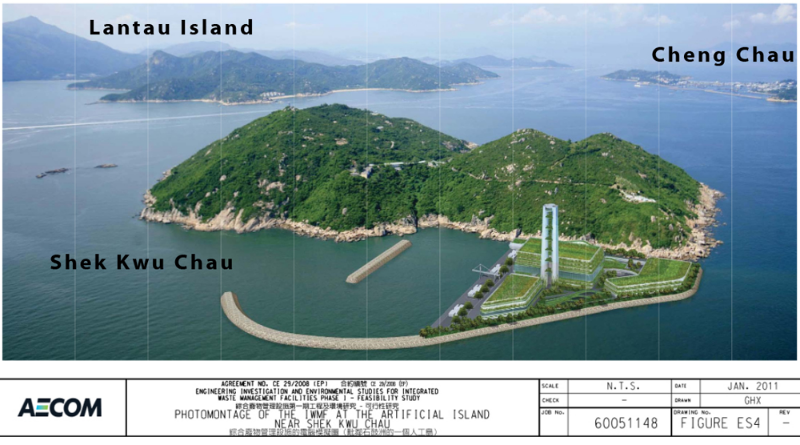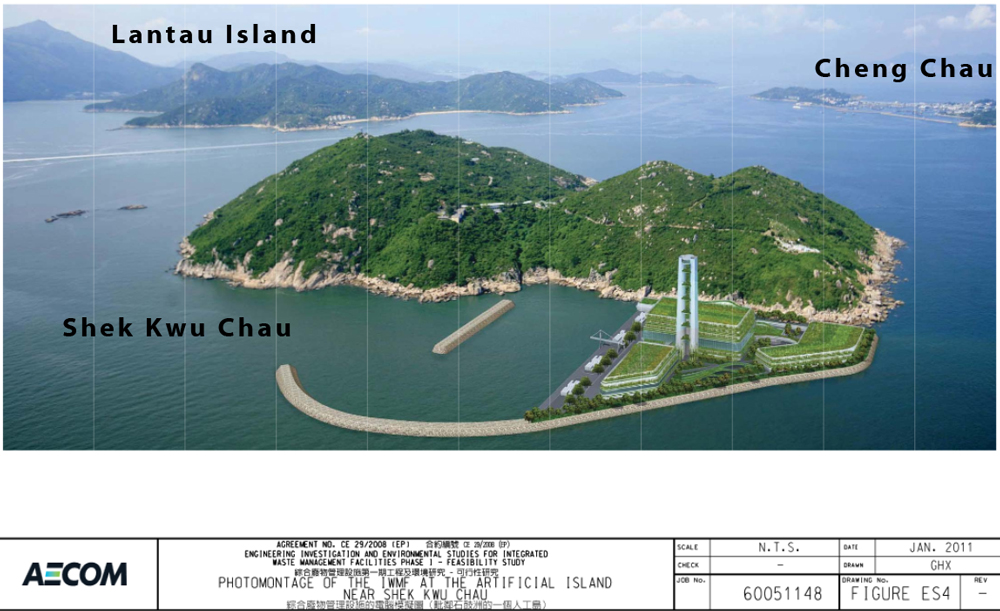In a city where health-related pollution issues are just hitting the mainstream agenda, we might want to take another look at the decision to spend HK18 billion to reclaim an area on a pristine island and build a super-incinerator, releasing dioxins and other carcinogens into the environment by sea, air and land.
No significant budget has been allocated for waste reduction or sorting — Plan B
Write a letter or send your message in a bottle — here’s the list
Sign this local petition to support waste reduction at source : Reduce waste at source
All Hong Kong residents will be affected — no one lives far enough away to escape the damaging health effects.
Falling behind
The Hong Kong decision follows a study of incinerators in Germany which have since been shut down due to the high levels of dioxin emissions blamed for air, water and food contamination as well as birth defects. In Japan, the high incidence of incinerator-related illnesses led the US Department of Defense on an nearby base to take action while local residents have added a new word to the Japanese language that describes incinerator-specific health issues
While municipal governments around the world turn to reduction, recycling and waste-to-energy plasma arc technology, local decision makers have approved funding for a HK$30 billion* 30-hectare mega-project using the same outdated and dangerous moving grate technology that New York City rejected in 2013.
“In this century of progress, with our knowledge of chemistry, and with the most complete machinery at our disposal, it seems to me like a lapse into barbarism to destroy this most valuable material simply for the purpose of getting rid of it, while at the same time we are eager to obtain these very same materials for our fields by purchase from other sources.” -Chemist Bruno Terne, 1893
In 2013, China’s Green Fence effectively terminated the export of Hong Kong waste, a practice that began following the closure of our last incinerator in 1995, as recommended in this White Paper:
“The main reason why our environment is now in an unsatisfactory state is that in the past the Government and the community made choices which gave too little emphasis to the needs of the environment … the Government therefore intends to examine more fully measures to limit the amount of waste generated and to encourage the recovery and recycling of wastes.” Hong Kong Government White Paper, 1989
Fast forward 20 years and the government has now approved a plan to build an artificial island and reclaim a pristine marine area around Shek Kwu Chau (whose existing Development Plan focuses on the area’s outstanding natural beauty) next to Lantau, Cheung Cheu and Lamma islands — all heavily promoted by the Hong Kong Tourism Authority.
By sea – 3,000 tonnes of unsorted waste will be shipped every day by marine transport notorious for its use of dirty fuel — By air – the incinerator will release emissions that contain dioxins — By land – 1,ooo tonnes of highly concentrated toxic ash will be transported to landfills every day
In Hong Kong, A Precipice of Waste: New York Times
While the rest of the world moves on, Hong Kong is moving fast to catch up.
In the past 12 months, forward-thinking start-ups have begun capitalizing on the territory’s lack of recycling infrastructure. Social enterprises are collecting and distributing food waste to feed the hungry. Retailers are promoting up-cycled furnishings and vintage fashion. Small businesses are producing boutique beverages sold in the glass bottles they collect from local restaurants and bars. With this week’s decision, it appears that these positive change are going unnoticed and that none of the authorities are paying any attention to the rate of change in our high-speed metropolis.
It is entirely possible that by the time the generator is completed in 8 years, our commercial landscape will have changed completely.
Local residents are beginning to pay attention to the extraordinary volume of waste we generate. The rising cost of materials is forcing the construction industry to re-think wholesale dumping of re-usable resources. The increase in fuel costs is driving demand for low-energy solutions. Companies are realizing the positive impact of waste-reduction on their bottom line. Conscious consumers are demanding more energy efficiency from products and services while rejecting unnecessary packaging and turning their attention towards cleaner, low-impact brands whose actions speak louder than words. False advertising claims are losing their grip as digital technology makes it easier to reveal and spread the truth.
“Hong Kong is the World’s Largest Manufacturer of Trash” – NY Times
Data compiled by the Organization for Economic Cooperation and Development shows that Hong Kong easily outdid the world’s most developed societies in terms of per capita garbage generation: 928 kilograms, or 78 percent more than the EU average. Two of the wealthiest societies in Asia, Japan and South Korea, produced 410 kilograms and 380 kilograms, respectively, of municipal waste per person each year. That is equivalent to just more than 900 pounds for Japan and 835 pounds for South Korea. The figure for China was 115 kilograms. The US generates an average of 760 kilograms of trash per person annually, while the average in the European Union was 520 kilograms.
Hong Kong’s proposed solution to the current landfill shortage involves shipping 3,000 tonnes of waste to a reclaimed island every day, burning it down to 1,000 tonnes of concentrated toxic ash and loading it back on to ships for disposal in local landfills, releasing toxic emissions to drift by air to local tourism hotspots, including Disney, The Big Buddha and Tai O, in the process.
– This mega-project will be nearly twice the height of the Central HSBC headquarters
– Toxic emissions will be blown on to South Lantau by the prevailing winds on average 25% of the year
– The estimated cost of HK$18 billion is HK$5 billion more than reported at public meetings in 2011
– At HK$2,800 per Hong Kong resident, the incineration solution costs HK$10 billion more than alternatives
– There has been no progress in developing local integrated waste reduction, separation, recycling and reuse systems
– The proposal will extend the industrial, urban footprint deep into areas reserved for recreation and conservation
It is time to reduce, reuse and recycle — not create new waste disposal strategies that support our addictive habits.
Now is the time to question the strategy of increased consumption as the driver of economic growth. It makes fiscal sense to invest in more feasible options using current technology. The government proposes to adopt the most expensive, time-consuming and environmentally damaging option, instead of applying its energies to educating the public and legislating for comprehensive waste reduction and recycling. Thousands of sustainable jobs and new business opportunities are created when waste-reduction practices become culturally ingrained, as has been proven in Japan, Taiwan and South Korea.
As a global economic centre, Hong Kong is perfectly positioned to take the lead on global issues.
Government Links
Environmental Impact Assessment Report
http://www.epd.gov.hk/eia/english/register/open/all.html
EPD Explanatory Booklet for the Proposed Integrated Waste Management Facilities
GovHK Waste & Recycling in Hong Kong
http://www.gov.hk/en/residents/environment/waste/wasterecycinhk.htm
Municipal Solid Waste
http://www.gov.hk/en/residents/environment/waste/msw.htm
Strategic Landfills
http://www.epd.gov.hk/epd/english/environmentinhk/waste/prob_solutions/msw_strategic.html
In the news
Protest Against Lantau’s Proposed Incinerator
http://hk-magazine.com/city-living/news/protest-against-lantau%E2%80%99s-proposed-incinerator-sunday
Puzzling over incineration
http://www.chinadaily.com.cn/hkedition/2013-12/12/content_17168774.htm
The need for Plan B
http://wastehk.org/2014/03/14/our-submission-to-ea-panel-the-need-for-plan-b/
A monument to waste
http://lantauconfidential.com/2014/03/19/a-monument-to-waste/
7 ways that you can help stop the incinerator on Shek Kwu Chau
http://www.livingislands.org.hk/tag/shek-kwu-chau/
Waste management in Hong Kong/business opportunities
HK Government needs to rethink its waste management policy
Giant steps toward a greener HK economy
http://www.chinadaily.com.cn/hkedition/2013-01/22/content_16151015.htm
Could China’s ‘green fence’ prompt a global recycling innovation?
http://www.theguardian.com/sustainable-business/china-green-fence-global-recycling-innovation
Wikileaks :
http://wikileaksnews.net/hong-kong-worlds-largest-manufacturer-of-trash.html
21CB : http://www.21cb.net/hong-kong-most-trash/
The Epoch Times : http://www.theepochtimes.com/n2/china-news/hong-kong-trash-45099.html
YouTube Videos
A tour of Shek Kwu Chau
Man On Emission
https://www.youtube.com/watch?v=zMDkiCV8fzc&list=UUPPbkeYjWvH-h95Pz_N4nIA
Hong Kong locals protest govt’s incinerator plans
https://www.youtube.com/watch?v=CbiYmbNcgjM
Hong Kong: Asia’s Waste City?
https://www.youtube.com/watch?v=gpwzBbXzAOs
Lantau Super Incinerator Protest
https://www.youtube.com/watch?v=H0y4xBGGhWY
Incinerator Insanity
https://www.youtube.com/watch?v=oWTNXCEsqpU
Long March vs Shek Kwu Chau Mega-Incinerator
https://www.youtube.com/watch?v=I2cdfqj46tU
Public meeting with EPD on Cheung Chau
https://www.youtube.com/watch?v=I3gxFp-gISg
Rally vs Shek Kwu Chau Mega Incinerator 18Mar2012
https://www.youtube.com/watch?v=GrGaNmesVH4
Cheung Chau Green Movement Day 10 July 2011
https://www.youtube.com/watch?v=CWueOCfCwls
In the motherland
East China officials halt waste plant plans amid protests
http://www.abc.net.au/news/2014-05-11/china-incinerator-government-back-down/5445086
China halts incinerator project after violent protests
Shenzhen plans world’s largest incinerator
http://topics.scmp.com/news/china-news-watch/article/Shenzhen-plans–worlds-largest–incinerator
Join the conversation
Click here to download documents
– Coordinated Local Initiatives
– Living Islands Movement News Release
– Green Lantau Association
– Letter to EPD from Martin Williams
– Living Islands Movement
– Facebook Group
– Green Cheung Chau – Video
– Write a letter : sample letter
– Contact list : list of contacts (names may need updating but tel/email should be current)
Concerns
Following are some of the points made in the many documents prepared by local citizens opposing the super-incinerator:
– Alternative locations include pre-despoiled sites with no damage to marine life – involve no risk of prevailing winds carrying emissions to populated areas of Hong Kong – are reachable by land as well as sea
– Government has not disputed estimates of cost from members of LIM with professional expertise – Environmental Impact Assessment (EIA) released Friday 18 November
– Emissions will be blown onto South Lantau by prevailing winds 25% of the year
– Proposed technology generates ash waste laden with toxins requiring careful disposal with a real risk of entering the food chain over time
– Site is in full view of South Lantau’s hills and beaches

Super-incinerator uses outmoded technology
– Government has been planning this incinerator for a decade and new technology is now available
– Incinerators with plasma arc furnaces (underway in EU and USA) can be built more quickly, more cheaply and with no toxic emissions
– Green Island Cement proposal uses waste to fuel cement kilns and process more waste than proposed super-incinerator with no toxic emissions

Photo credit: Lantau Confidential
Notes
*The figure of HK$30 billion is an estimate by local professionals and industry experts who have evaluated the project.


